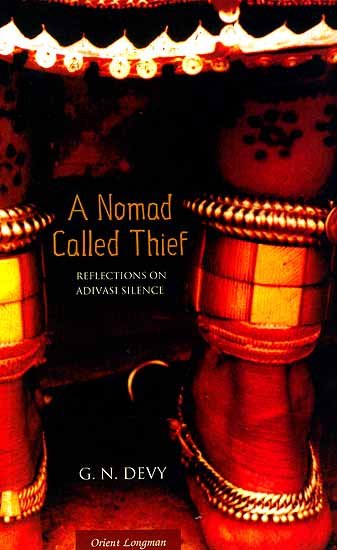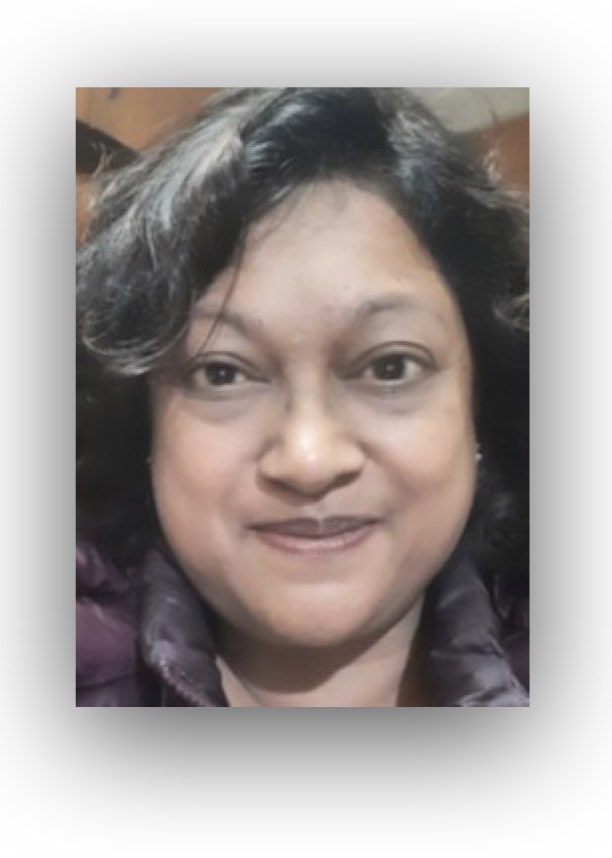
Reflections on Adivasi Silence and Voice by Ganesh [G.N.] Devy | Publications >>
WHEN Gujarat was burning between 27 February and 4 March [2002], the tribal belt on the eastern border of Gujarat was quiet. The only exception was the two districts of Panchmahals for which Godhra is the main town. Elsewhere in the tribal areas, tribals, Hindus and Muslims continued to coexist peacefully. The only disturbing sight was the long lines of tribal labourers walking the distance from the curfew-bound cities to their villages, in some cases a walk of 100 kilometres. They walked silently, carrying the burden of all their belongings on their heads, a lot of misery in their hearts and terrified like trapped animals. […]
For about a decade now the Sangh Parivar has been active in the tribal areas in every state. Through one of its sister organizations, the Vanavasi Seva Sangh (VSS), it has been spreading the message of Hindutva among the tribals. The VSS insists on calling the tribals vanavasis and not adivasis which means ‘the indigenous people’, since the VSS shares the RSS view of history in which the Aryans are the original inhabitants of India. How can adivasis, who in the VSS opinion are non-Aryans, be the original inhabitants? Thus the adivasiness of the tribals is a serious threat to Hindutva. […]
We are in a situation where if we do not act every moment, we will have to own up to the responsibility of complicity to violence. Therefore, constructive action is our only future. There is none other, for otherwise there will be no future for us.
Source: “Tribal voice and violence” by Ganesh Devy in SOCIETY UNDER SIEGE: a symposium on the breakdown of civil society in Gujarat (india-seminar.com, # 513 May 2002)
Address : https://www.india-seminar.com/2002/513/513%20ganesh%20devy.htm
Date Visited: 15 July 2021
SOCIETY UNDER SIEGE: a symposium on the breakdown of civil society in Gujarat
Source: 513, May 2002, Gujarat – Society under siege
Address : https://www.india-seminar.com/2002/513.htm
Date Visited: 15 July 2021
What is characteristic of the relationship between tribe and civilization in India is that there was virtually no way in which a tribal dynasty could legitimize its rule without becoming Hinduized. This meant, among other things, bringing in Brahmin priests, Barbers, Washermen and the rest, and replicating in due course of time the hierarchical structure of caste.
Source: “Uncivilising the Mind: How anthropology shaped the discourse on tribes in India” by Richard Kamei (Caravan Magazine, 1 March 2021)
URL: https://caravanmagazine.in/books/anthropologists-tribes-india
Date Visited: 15 July 2021
“In India, the term ‘tribe‘ has referred, since the 16th century, to groups living under ‘primitive‘ and ‘barbarous‘ conditions. The colonial administration used the term to distinguish peoples who were heterogeneous in physical and linguistic traits and lived under quite different demographic and ecological conditions, with varying levels of acculturation and development. In the various countries of South Asia, tribal peoples were often called by derogatory terms such as jungli (‘savage’) during the colonial period.” – Marine Carrin, General Introduction to Brill’s Encyclopedia of the Religions of the Indigenous People of South Asia >>
Full text of the report © 2002, Sabrang Communications & Publishing Pvt. Ltd, Mumbai, India, and The South Asia Citizens Web, France | To read the full article, click here >>
Most indigenous tribal people of India refer to themselves as Adivasi (literally: first inhabitants). This term of choice also the one that is used in almost all matters of public discourse about tribal peoples – from school textbooks to government documents and newspaper accounts to academic scholarship. The only exception to this more or less universal rule is the Sangh Parivar and all those who are ideologically committed to Hindutva. The term of choice for them is “vanvasi” (forest dwellers) as opposed to “adivasi” (first inhabitants).
Historically, the adivasi’s have been marginalized from the mainstream of Indian society through the caste system. […]
Thus under the guise of tribal welfare and education what is undertaken by most IDRF funded Sangh organizations is an intense religious reconversion program […]
Source: “Adivasi vs Vanvasi: The Hinduization of Tribals in India”, Outlook India
URL: https://www.outlookindia.com/article.aspx?217974
Date Visited: Thu Jan 09 2014 13:23:40 GMT+0100 (CET)
[Bold typeface added above for emphasis]

“[A] common perception of conversion, prevalent in India, is that all conversions take place only among deprived lower caste or tribal groups, which are considered more susceptible to allurement or coercion. The reality of upper caste conversions is ignored in this climate of cynicism.”– Dr. Ivy Imogene Hansdak in Pandita Ramabai Saraswati: the convert as ‘heretic’ | More about the effects of “casteism” >>

Ādivāsi [ādibāsi] may be used in accordance with local conventions; and increasingly so for official purposes (e.g. in “Conserving Tradition and Practices of Adivasi Communities in India” published on NIDM.gov.in); Dr. Ivy Hansdak clarifies:
“Adivasi – which is derived from Sanskrit – is applied to the dark-skinned or Austro-Asiatic indigenous groups of India (usually those from Eastern India). It is a commonly-used term in Jharkhand, Bihar, West Bengal and Odisha. It is also used by the local Mongoloid tribes of North Eastern India for the migrant workers who were brought in as indentured labourers to work in tea plantations during the colonial period. ‘Tribal’ is a very broad term in the English language and includes all the different indigenous groups of India. The terms ‘indigenous’ and ‘aboriginal’ are not used often as the government claims most groups are indigenous in India. ‘Denotified Tribes’ is only used for those nomadic tribes who were notified as ‘criminal tribes’ during the British Raj [colonial rule]; later they were ‘denotified’ but still bear the stigma.” (emails dated 2020 & 2023)
“Tribal groups (adivasis) in India have often been excluded, marginalized and oppressed by ‘mainstream’ society. In many ways this exclusion, marginalization and oppression is fostered by the way in which ‘mainstream’ society looks at the adivasis – as exotic, dangerous, or ‘primitive’ others.” – Ganesh [G.N.] Devy in A Nomad Called Thief: Reflections on Adivasi Silence and Voice | Classifications in different states >>
“Tribals are subject to oppression and cruelty even after independence and still picked up by the investigating officers to cover up shoddy investigations.” – D.Y. Chandrachud (Chief Justice of India since 9 November 2022) quoted in “Members of De-Notified Tribes Picked Up to Cover Up Shoddy Investigations” | Learn more >>
“Since the Indian Constitution uses the term ‘Scheduled Tribes’ or ‘tribals’ to refer to indigenous communities in India and the colloquial reference used by several indigenous communities themselves is ‘adivasis’ these two terms shall be used interchangeably.” – Rebecca S . David in “An analysis of the impact of the Forest Rights Act (2006) in three states of India” (MPhil University of Cambridge, UK, 2014), p. 1 | Learn more | Classifications in different states >>
“Adivasis are not a homogeneous group; there are over 200 distinct peoples speaking more than 100 languages, and varying greatly in ethnicity and culture.” – Source: World Directory of Minorities and Indigenous Peoples – India | Learn more | Classifications in different states >>